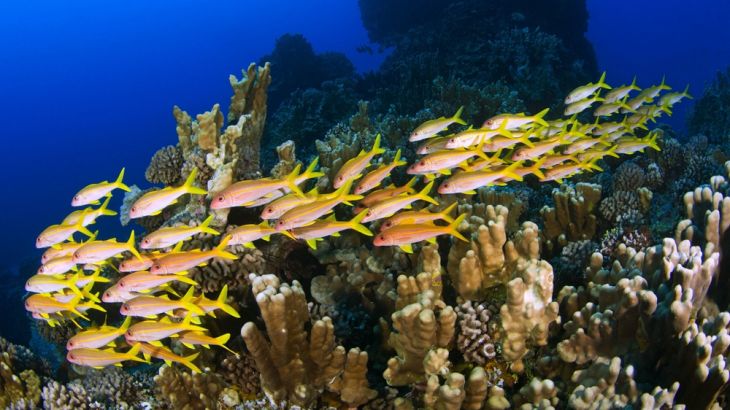
The quest to save the world’s coral reefs
We explore how scientists are trying to prevent coral reefs from going extinct.
Coral reefs are the “rainforests of the sea”, prized for their beauty and resources the world over. They are also one of the Earth’s most vulnerable ecosystems threatened by climate change. And no place better symbolises their importance and their plight than Australia‘s Great Barrier Reef.
The Great Barrier Reef covers 345,000 square kilometres, roughly the size of Germany, and stretches 2300km in length, nearly equal to the entire coastline of Chile.
Keep reading
list of 4 itemsHong Kong’s first monkey virus case – what do we know about the B virus?
Why will low birthrate in Europe trigger ‘Staggering social change’?
The Max Planck Society must end its unconditional support for Israel
If we continue on our current pathway where we're pumping CO2 into the atmosphere, we're acidifying the oceans, we won't have coral reefs within 20, 30, 40 years from now.
While coral reefs cover less than two percent of the ocean floor, nearly 25 percent of all marine life depends on them for survival.
Because it’s a living structure, it can also die. According to the World Resources Institute (WRI), nearly all coral reefs worldwide will be threatened with death by 2050.
“There are multiple stressors that face coral reefs like the Great Barrier Reef. There’s sediments and nutrients flowing down rivers and smothering corals and other organisms. There has been too much fishing in some cases where we’ve knocked down key species. But the real ‘show-stoppers’ now are the global changes that we’re inflicting on coral reefs,” explains Ove Hoegh-Guldberg, director of The Global Change Institute.
According to WRI, the absorption of an increased level of atmospheric carbon dioxide into the oceans has caused them to become more acidic. This change in water chemistry inhibits the ability of corals, whose skeletons are composed of calcium carbonate, to grow. Higher water temperatures also affect the ecology of the reefs and turn the coral white, a process known as “coral bleaching.”
Scientific models show both ocean acidification and ocean temperatures spiking to unprecedented levels over the next 100 years.
A group of scientists just outside of Townsville are fighting to save the coral reefs – not just from bleaching events now, but also from the effects of climate change yet to come.
Researchers at Australia’s National Sea Simulator aquarium brought the ocean to their lab to replicate and manipulate ocean conditions in a controlled environment.
“So what this experiment is, is we’re looking at current day conditions, and we’re looking at conditions that are projected by the IPCC, which is the intergovernmental panel on climate change, conditions which are predicted for the year 2050 and then conditions which are predicted for the year 2100,” says Nicole Webster.
|
|
Researchers are seeking to determine not just whether corals can be conditioned to withstand future ocean conditions, but whether those manipulated corals can pass those survival traits on to future generations – a process known as assisted evolution.
For Ove Hoeugh-Guldberg and other scientists, the threat to coral reefs goes beyond science. More than two million people visit the Great Barrier Reef every year, a $6bn a year industry supported by over 16,000 employees.
“When you take what coral reefs represent to people, this is amazing numbers right, there’s an estimated 500 million people on the planet who come to coral reefs almost on a daily basis to get food and income. Now, that’s about one in every 12 people dependent on coral reefs worldwide,” says Hoeugh-Guldberg.